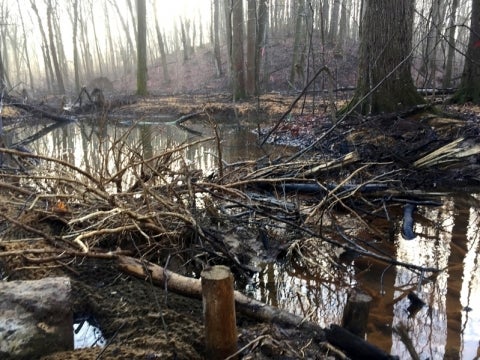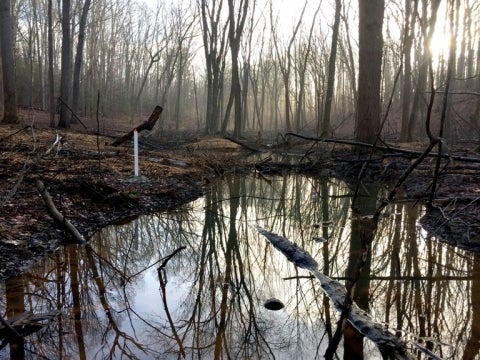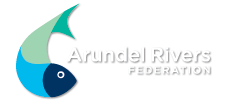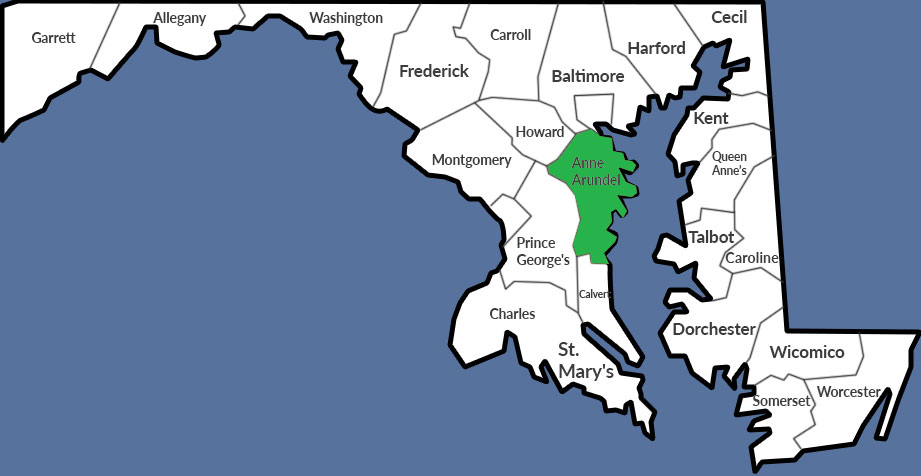Bacon Ridge Stream Restoration

Parts of the Chesapeake Bay watershed contain a high percentage of impervious cover – paved or other hard surfaces such as roofs and roadways that prevent rain water from being absorbed into the ground. Instead, water runs along these surfaces, collecting trash and substances such as motor oil, lawn fertilizers, and pesticides. This polluted stormwater flows into streams and rivers, where it threatens aquatic ecosystems and public health.
Effective stormwater management, on the other hand, creates safe paths for polluted runoff to be captured and filtered through the ground before it reaches waterways. This helps keep the environment clean and our communities healthy!

Project Location: Annapolis, MD
Problem: Bacon Ridge Branch, a headwater to the South River, flows through the center of Bacon Ridge Natural Area. Despite strong land protection efforts in the past 20 years, deforestation and development upstream funneled huge surges of stormwater into this stream. This caused over 180 eroded cliff drop-offs called ‘headcuts’ along the stream which became unstable and degraded. Without restoration, these headcuts would have worsened and eroded more streambank with every storm, completely drained the surrounding wetlands, and flooded downstream with polluted runoff.
Solution: Arundel Rivers Federation and Biohabitats restored the stream and used an innovative, low-cost technique to maximize funding and exceed expectations. They restored almost six times the originally proposed length.
The project creates long-term streambed and streambank stability, slows the stormwater flows to reduce erosion and improve water quality, reconnects the stream to its floodplain, and restores the area’s wildlife habitat.
Fighting climate change: The team installed log jams made from wood harvested on site that absorb energy and slow the flow of stormwater. Not only does this make it resilient to stronger storms, but by not importing materials from other sites, the project’s carbon footprint is much smaller than standard stream restoration projects.
A model for others: Bacon Ridge has inspired others and the design is being replicated throughout the South River Watershed.
Award-winning: The project also won a “Best Stream Restoration in the Bay” award from the Chesapeake Stormwater Network in 2019.
Scale: 4,350 linear feet of stream restored
Pollutants Removed per year: 39,150 lbs of suspended soils per year, 633 lbs of nitrogen per year, 292 lbs of phosphorus per year
Total Cost: $722,000
Funding Sources: Chesapeake Bay Trust; MD Department of Natural Resources





